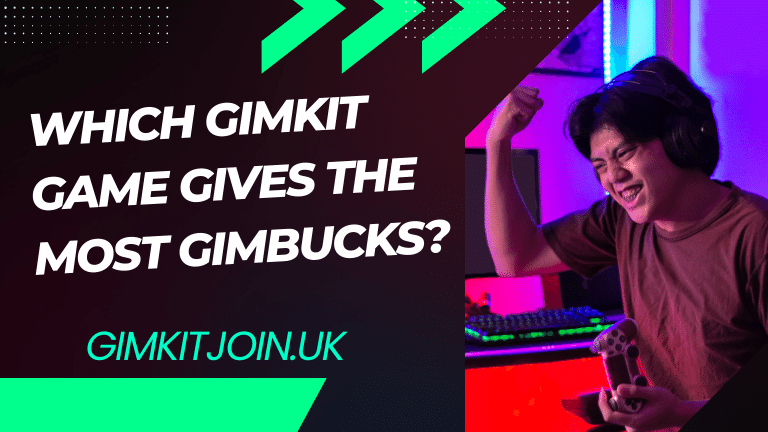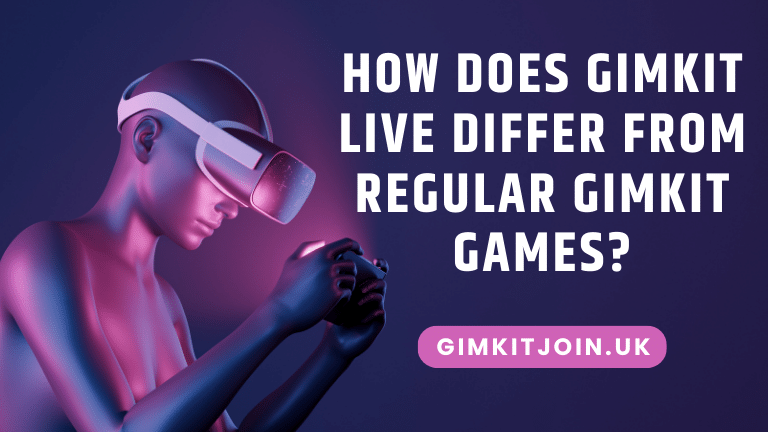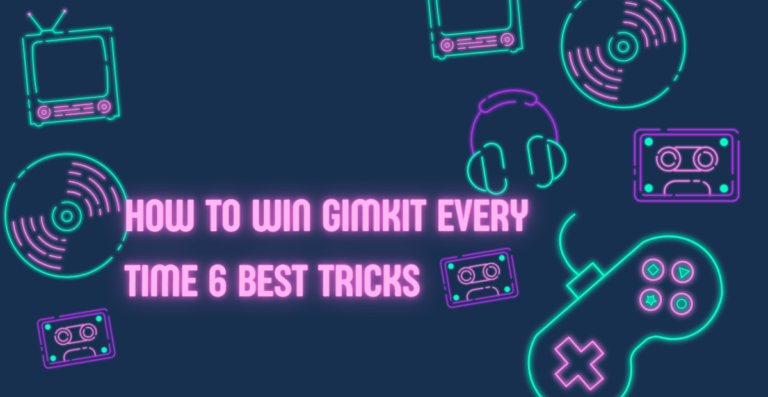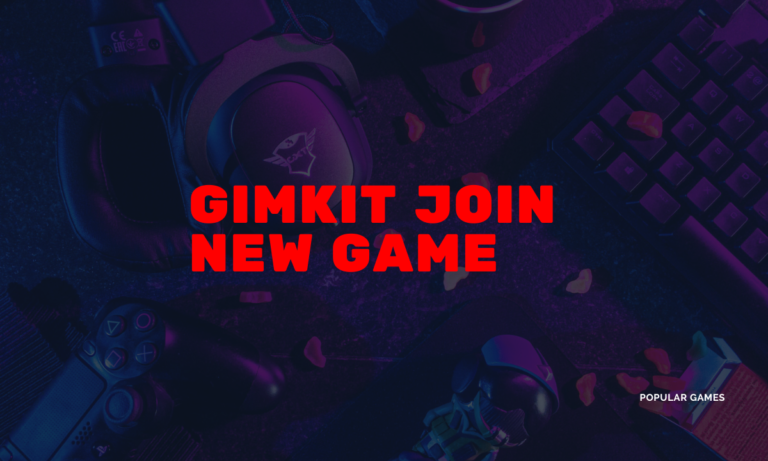Apps Like Gimkit [2024]
Apps Like Gimkit 2024.In the ever-evolving landscape of educational technology, Gimkit has emerged as a popular platform that transforms learning into an engaging, game-like experience. However, Gimkit isn’t the only player in this innovative field. A host of other applications have sprung up, each offering unique features and approaches to gamified learning. In this comprehensive guide, we’ll explore the world of apps like Gimkit, delving into their features, benefits, and how they’re reshaping education in the digital age.
Understanding the Gimkit Phenomenon
Before we dive into the alternatives, it’s essential to understand what makes Gimkit so popular. Gimkit is an educational game-show platform that allows teachers to create quizzes and turn them into interactive games. Students compete against each other, answering questions to earn virtual currency, which they can use to upgrade their in-game abilities. This gamification approach has proven highly effective in engaging students and improving retention of learning materials.
The Rise of Gamification in Education
Gamification in education isn’t a new concept, but it has gained significant traction in recent years, especially with the proliferation of digital devices in classrooms. By incorporating game elements into learning, these apps tap into students’ natural desire for competition, achievement, and reward. This approach has been shown to increase motivation, engagement, and ultimately, learning outcomes.
Key Features of Successful Educational Gaming Apps
While each app has its unique offerings, several key features are common among the most successful educational gaming platforms:
- Interactive gameplay: Engaging game mechanics that make learning fun and challenging.
- Customizable Content: The ability for educators to create or customize content to fit their curriculum.
- Real-time Feedback: Immediate feedback on answers to reinforce learning.
- Progress Tracking: Tools for both students and teachers to monitor progress over time.
- Multi-device Compatibility: Accessibility across various devices, including smartphones, tablets, and computers.
Now, let’s explore some of the most popular apps that offer experiences similar to Gimkit.
Kahoot!: The Quiz Show Pioneer
Kahoot! is perhaps the most well-known competitor to Gimkit. This platform allows teachers to create multiple-choice quizzes that students can answer in real-time, competing against their classmates.
Key Features of Kahoot!
- Live games with real-time rankings
- A vast library of pre-made quizzes
- Option to assign quizzes as homework
- Team mode for collaborative learning
How Kahoot! Stands Out
Kahoot!’s strength lies in its simplicity and the excitement it generates in the classroom. The live leaderboard and timed questions create a sense of urgency and competition that many students find exhilarating.
Quizizz: Self-Paced Learning with a Twist
Quizizz takes a slightly different approach to gamified learning. While it offers live quizzes similar to Kahoot!, it also allows for self-paced games, giving students more control over their learning experience.
Unique Aspects of Quizizz
- Meme-based feedback for correct and incorrect answers
- Customizable avatars for students
- Detailed reports for teachers to analyze student performance
- Integration with Google Classroom and other LMS platforms
The Quizizz Advantage
The self-paced nature of Quizizz makes it an excellent option for homework assignments or for classrooms where students work at different speeds. The meme-based feedback adds an element of fun that resonates with many students.
Blooket: Diverse Game Modes for Varied Learning
Blooket takes gamification to the next level by offering a variety of game modes, each with its own unique mechanics. From a racing game to a tower defense-style game, Blooket provides diverse ways to engage students.
Blooket’s Standout Features
- Multiple game modes to suit different learning styles
- In-game currency system similar to Gimkit
- Customizable question sets
- Option for students to host their own games
Why Educators Love Blooket
The variety of game modes in Blooket allows teachers to keep the learning experience fresh and exciting. Students can experience different types of gameplay while still engaging with the educational content.
Quizlet Live: Collaborative Learning in Real-Time
Quizlet Live takes a collaborative approach to gamified learning. Instead of individual competition, students are grouped into teams that must work together to answer questions correctly.
Quizlet Live’s Unique Offerings
- Team-based gameplay that encourages collaboration
- Extensive library of user-created study sets
- Integration with the broader Quizlet platform for comprehensive study tools
- Teacher dashboard for monitoring team progress
The Power of Collaboration in Quizlet Live
By emphasizing teamwork, Quizlet Live helps develop communication and collaboration skills alongside subject knowledge. This approach can be particularly beneficial for fostering a positive classroom dynamic.
Socrative: Versatile Assessment Tools
While not as game-focused as some other platforms, Socrative offers a range of interactive quiz types that can make assessment more engaging for students.
Socrative’s Key Features
- Multiple question types, including short answer and open-ended questions
- Space Race game for competitive quizzing
- Exit ticket feature for quick end-of-class assessment
- Detailed reporting for teachers
Socrative’s Edge in Assessment
Socrative’s strength lies in its versatility as an assessment tool. While it can be used for gamified quizzes, it also excels in more traditional forms of assessment, making it a well-rounded choice for educators.
Formative: Real-Time Monitoring and Feedback
Formative takes a slightly different approach, focusing on real-time monitoring of student work and immediate teacher feedback.
Standout Aspects of Formative
- Live student response monitoring
- Ability to provide instant feedback on student work
- Wide range of question types, including audio and video responses
- Integration with various content sources like YouTube and Desmos
The Formative Difference
Formative’s real-time monitoring capabilities allow teachers to intervene and provide help exactly when students need it. This immediate feedback loop can significantly enhance the learning process.
EdPuzzle: Interactive Video Learning
EdPuzzle brings gamification to video-based learning, allowing teachers to create interactive video lessons with embedded questions and comments.
EdPuzzle’s Unique Features
- Ability to crop and edit videos from various sources
- Embed questions and comments directly into videos
- Track student viewing habits and quiz performance
- Integration with popular LMS platforms
The Power of Interactive Video
By turning passive video watching into an interactive experience, EdPuzzle helps maintain student engagement and ensures they’re actively processing the information presented.
Nearpod: Comprehensive Interactive Lessons
Nearpod offers a robust platform for creating interactive lessons that can include quizzes, polls, and various multimedia elements.
Nearpod’s Key Offerings
- Virtual Reality (VR) field trips
- Interactive presentations with embedded questions and activities
- Collaboration board for student discussions
- Gamified quizzes with Time to Climb feature
Why Educators Choose Nearpod
Nearpod’s comprehensive approach to interactive lessons makes it a versatile tool for educators. The VR field trips, in particular, offer unique opportunities for immersive learning experiences.
The Impact of Gamified Learning Apps on Education
The proliferation of apps like Gimkit and its alternatives has had a significant impact on the educational landscape. Let’s explore some of the key effects:
Increased Student Engagement
One of the primary benefits of these apps is their ability to capture and maintain student attention. By turning learning into a game, these platforms tap into students’ natural competitiveness and desire for achievement.
Improved Knowledge Retention
The interactive nature of these apps, combined with immediate feedback and repetition, has been shown to improve knowledge retention. Students are more likely to remember information when they’ve engaged with it in a fun, interactive way.
Personalized Learning Experiences
Many of these apps offer adaptive learning features, adjusting the difficulty and focus of questions based on individual student performance. This personalization helps ensure that each student is appropriately challenged.
Enhanced Classroom Dynamics
Team-based games and collaborative features in some of these apps can help foster a sense of community in the classroom. They encourage students to work together and support each other’s learning.
Real-Time Assessment and Feedback
These apps provide teachers with instant insights into student understanding. This real-time data allows for immediate intervention and adjustment of teaching strategies.
Choosing the Right App for Your Classroom
With so many options available, choosing the right app for your classroom can be challenging. Here are some factors to consider:
Subject Matter and Grade Level
Some apps may be better suited for certain subjects or age groups. Consider the complexity of the content and the user interface when making your choice.
Classroom Technology Resources
Ensure that the app you choose is compatible with the devices available in your classroom. Some apps may require each student to have a device, while others can work with shared devices.
Learning Objectives
Consider what you’re trying to achieve. Are you looking for a quick assessment tool, a comprehensive lesson platform, or something in between?
Student Preferences
If possible, get input from your students. They may have experience with some of these apps and can provide valuable insights into what works best for them.
Cost and Licensing
While many of these apps offer free versions, some features may require a paid subscription. Consider your budget and the features you need when making your decision.
Implementing Gamified Learning Apps Effectively
Once you’ve chosen an app, here are some tips for implementing it effectively in your classroom:
Start Small
Begin with simple quizzes or games to get both you and your students comfortable with the platform.
Integrate with Curriculum
Use the app to reinforce concepts you’re teaching in class, not as a standalone activity.
Encourage Healthy Competition
While competition can be motivating, ensure it doesn’t become overwhelming. Emphasize personal improvement over beating others.
Use Data to Inform Teaching
Take advantage of the analytics these apps provide to identify areas where students may be struggling and adjust your teaching accordingly.
Mix It Up
Use different apps or game modes to keep the experience fresh and engaging for students.
The Future of Gamified Learning
As technology continues to evolve, we can expect to see even more innovative approaches to gamified learning. Some trends to watch for include:
Artificial Intelligence Integration
AI could be used to create more personalized learning experiences, adapting game difficulty and content in real-time based on individual student performance.
Virtual and Augmented Reality
As VR and AR technologies become more accessible, we may see more immersive educational games that allow students to interact with 3D environments.
Increased Cross-Platform Integration
We may see more integration between different educational apps and platforms, allowing for a more seamless learning experience across various tools.
Gamification Beyond Quizzes
Future apps may gamify other aspects of education, such as project-based learning or long-term goal setting.
Conclusion: Embracing the Gamification Revolution
Apps like Gimkit and its alternatives are at the forefront of a revolution in educational technology. By harnessing the power of gamification, these platforms are making learning more engaging, interactive, and effective than ever before.
While no single app is perfect for every classroom or student, the variety of options available means that educators can find tools that best suit their teaching style and their students’ needs. As these technologies continue to evolve, they promise to open up even more exciting possibilities for enhancing education through gamification.
Whether you’re a teacher looking to spice up your lessons, a student seeking more engaging ways to learn, or a parent interested in supporting your child’s education, exploring these gamified learning apps can provide valuable insights into the future of education. Embrace the gamification revolution, and watch as learning transforms from a chore into an adventure.
FAQs
What are the top alternatives to Gimkit in 2024?
Popular alternatives include Kahoot!, Quizlet, Blooket, and Quizizz, each offering unique features for interactive learning.
How does Kahoot! compare to Gimkit?
Kahoot! focuses on real-time quizzes and polls, while Gimkit emphasizes long-term learning through repetition and a game-like economy system.
Is Quizlet still relevant in 2024 as a Gimkit alternative?
Yes, Quizlet remains relevant with its flashcard-based learning, spaced repetition, and collaborative study sets.
What makes Blooket stand out among Gimkit alternatives?
Blooket offers a variety of game modes, including Tower Defense and Gold Quest, making it highly engaging for students.
Can Quizizz be used for homework like Gimkit?
Yes, Quizizz offers a homework mode, allowing teachers to assign quizzes for students to complete outside of class time.






